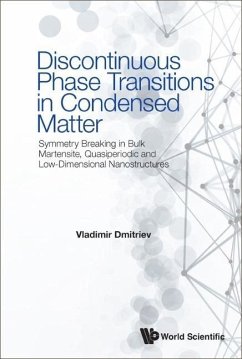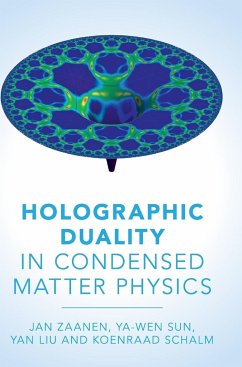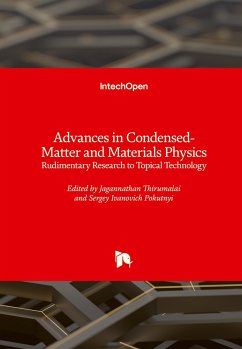
DISCONTINUOUS PHASE TRANSITIONS IN CONDENSED MATTER
Versandkostenfrei!
Versandfertig in 1-2 Wochen
136,99 €
inkl. MwSt.

PAYBACK Punkte
68 °P sammeln!
Discontinuous (first-order) phase transitions constitute the most fundamental and widespread type of structural transitions existing in Nature, forming a large majority of the transitions found in elemental crystals, alloys, inorganic compounds, minerals and complex fluids. Nevertheless, only a small part of them, namely, weakly discontinuous transformations, were considered by phenomenological theories, leaving aside the most interesting from a theoretical point of view and the most important for application cases. Discontinuous Phase Transitions in Condensed Matter introduces a density-wave ...
Discontinuous (first-order) phase transitions constitute the most fundamental and widespread type of structural transitions existing in Nature, forming a large majority of the transitions found in elemental crystals, alloys, inorganic compounds, minerals and complex fluids. Nevertheless, only a small part of them, namely, weakly discontinuous transformations, were considered by phenomenological theories, leaving aside the most interesting from a theoretical point of view and the most important for application cases. Discontinuous Phase Transitions in Condensed Matter introduces a density-wave approach to phase transitions which results in a unified, symmetry-based, model-free theory of the weak crystallization of molecular mixtures to liquid-crystalline mesophases, strongly discontinuous crystallization from molten metals and alloys to conventional, fully segregated crystals, to aperiodic, quasi-crystalline structures. Assembly of aperiodic closed virus capsids with non-crystallographic symmetry also falls into the domain of applicability of the density-wave approach. The book also considers the applicability domains of the symmetry-based approach in physics of low-dimensional systems. It includes comparisons of stability of different surface superstructures and metal monoatomic coverage structures on the surface of single-crystalline substrates. The example of the twisted graphene bilayer demonstrates how parametrization in the spirit of an advanced phenomenological approach can establish symmetry-controlled, and therefore model-free, links between geometrical parameters of the twisted bilayer structure and reconstruction of its Brillouin zone and energy bands.












